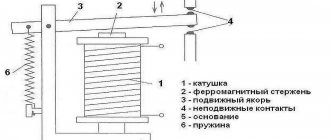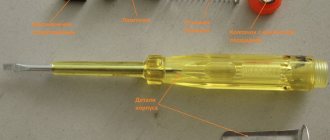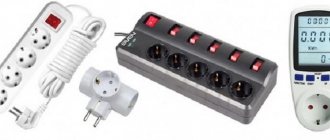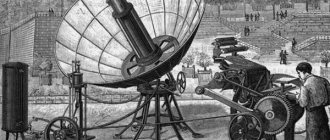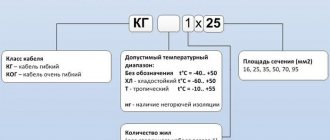What is a series of denominations?
This concept establishes a certain pattern of alternating values for any radio components, including resistors. The existing standard was first approved back in 1948 and was designated by the Latin letter E, meaning EIA in the Electronic Industries Alliance. Following the letter E is a number indicating a specific line of values; it also shows the number of denominations available in this series. For example, E6 breaks down the nominal power, capacitance or resistance in the range from 0 to 10 into six units; if compared with E96, it will already have 96 of these units.
From a mathematical point of view, nominal values are a logarithmic function, so the step of change in nominal resistances can be determined by the formula:
where n is the serial number of a particular member, and N is the number of the series.
To select the desired model from the proposed data lines, the set value, for example, for E12 is 1... 1.2... 1.5... etc. and multiplied by a decimal factor - 10, 100, 1000, etc. until the desired value is reached. There are seven standard denominations in total, although the first of them is no longer produced today, but you can still find it in old devices. Next, we will consider the features of each of a number of part ratings.
Marking
Alphanumeric code
Elements with wire leads are identified by writing on the surface of the housing. The numbers indicate the denomination, and the letters indicate the measurement range. The letters "E" and "R" are for ohms, "K" is for kilohms, and "M" is for megohms.
We advise you to study Contactors and magnetic starters
The letter in the marking acts as a decimal point. For example, the designation 5R8 corresponds to a resistance of 5.8 Ohms, 7K8 means 7.8 kOhms, and M59 equals 590 kOhms.
Color coding
For small components whose labels cannot be read, color marking of resistors using colored stripes has been developed.
A number of colored stripes are shifted to the edge of the case, and the countdown begins from the stripe closest to the edge.
If the marking contains five bars, then the first three will show the resistance value in ohms, the next one determines the multiplier, and the last one indicates the tolerance.
Coding of SMD elements
The photo of surface-mount resistors shows that small sizes require the use of other designation methods. Manufacturers have introduced three basic methods of coding, combining products into groups by size.
Products with a tolerance of 2, 5 and 10%. There is a digital mark on the case, for example 330, 683, 474. The first two numbers indicate the mantissa, and the third acts as an indicator of the power of the number 10. Accordingly, the inscription 330 shows 33*1=33 Ohm, 683 means 68*1000=68 kOhm, 473 respectively 47* 10000=470 kOhm. Some models use the letter "R" as a decimal point.
Models of size 0805 and others with a one-percent tolerance are designated according to a principle similar to the first group: the first three digits are the mantissa, the fourth, the multiplier is a power of the base 10, it is also allowed to use the letter “R”. Set 7430 corresponds to a value of 743 ohms
SMD size 0603 are marked with a combination of two numbers and a letter, which determines the degree of the multiplier: A - zero degree, B - first, C - second, D - third, E - fourth, F - fifth, R - minus the first, S - minus the second , Z – minus the third power. The number indicates the code by which the mantissa is found in the EIA-96 table.
For example, code 75C. 75 in the table corresponds to 590. The letter “C” indicates a multiplier of 100. Accordingly, 590*100=59 kOhm.
Series E3
The nominal series E3 includes only three resistance values: 1; 2.2; 4.7. In addition, the electrical resistance of the resistors may deviate from the declared parameter. The same can be repeated by the capacitance of the capacitor and other characteristics of parts of electronic circuits that comply with E3 standards. Normal fluctuations in the main characteristics are considered to be no more than 50%, which means that if you want to purchase a 10-ohm non-wire resistor, the factory can produce it in the range from 5.1 to 14.9 ohms, without going beyond the boundaries set by the standard.
Principles of constructing series
Resistor resistance - formula for calculation
The E24 series of resistors can be approximately described in the form of a geometric progression. The components included in this line can divide the interval [1;10] into equal segments, the number of which is equal to the name of the table (24). Series containing fewer components can be obtained by removing even-numbered elements from the original line. If in the progression describing table E24 a denominator of 101/24 is used, then for E12 its value will be equal to 101/12, and for E6 – 101/6. Series with more than 24 numbers approach the progression with almost absolute accuracy. In the denominator of 101/k, the number k is triple the power of two. In addition, rulers can be described by sequences of decimal logarithms. You can calculate the value of a resistor device using an online calculator.
Important! You can calculate the nominal value for a component of a particular series using the following expression: V(k)=10k/K=exp((k/K)*ln 10). Here K is the number of the line itself (6, 12, 24 are the numbers following the letter E), k is the serial number of the nominal value within it.
Value tables can also be used in the following way. If, when calculating the required indicators for a certain circuit, it turns out that it is necessary to purchase a resistor, for example, 1180 Ohms, and you only have access to standard parts (not of increased accuracy), you can take table E24. It has values 1.1 and 1.2. They are multiplied by 10 so many times to get indicators similar to the required ones. In this case, after multiplying three times, the results are 1100 and 1200. The second value is closer to the desired one, and accordingly, it is advisable to purchase just such a component.
Row E6
Here, to indicate denominations, there are six possible values: 1; 1.5; 2.2; 3.3; 4.7; 6.8. When indicating the nominal capacitances, resistances and other characteristics of radio components, E6 has the following differences:
- the error tolerance is no more than 20%, which gives a considerable deviation, which must be taken into account when operating precision instruments;
- when using color markings for ceramic or carbon resistors, the parts will have a black stripe, characterizing their possible error;
Determination of permissible deviation by color marking
- They are most widespread in power equipment, where the main role of the resistor is to dampen the current load, and the existing error will not have a significant effect.
RANKS OF PREFERRED VALUES FOR RESISTORS AND CAPACITORS
The numbers given in table. 1, and groups of numbers that are multiples of 10 make up the series of preferred numbers and the corresponding permissible deviations:
We advise you to study the Electrical Safety Program: Group 2
a) nominal values of resistor resistance;
b) nominal capacitance values of fixed capacitors.
Table 1
Designation of rows
| E24 | E12 | E6 | EZ |
| Tolerance ± 5% | Tolerance ± 10% | Tolerance ± 20% | Admission St. ± 20% |
| 1,0 | 1,0 | 1,0 | 1,0 |
| 1,1 | |||
| 1,2 | 1,2 | ||
| 1,3 | |||
| 1,5 | 1,5 | 1,5 | |
| 1,6 | |||
| 1,8 | 1,8 | ||
| 2,0 | |||
| 2,2 | 2,2 | 2,2 | 2,2 |
| 2,4 | |||
| 2,7 | 2,7 | ||
| 3,0 | |||
| 3,3 | 3,3 | 3,3 | |
| 3,6 | |||
| 3,9 | 3,9 | ||
| 4,3 | |||
| 4,7 | 4,7 | 4,7 | 4,7 |
| 5,1 | |||
| 5,6 | 5,6 | ||
| 6,2 | |||
| 6,8 | 6,8 | 6,8 | |
| 7,5 | |||
| 8,2 | 8,2 | ||
| 9,1 |
Official publication ★
Reproduction is prohibited
Standards Publishing House, 1991 Standartinform, 2006
Note. The EZ series consists of rounded values of the theoretical numbers HO" and is obtained from the E6 series by excluding even terms.
The E6 series consists of rounded values of the theoretical numbers HO" and is obtained from the E12 series by eliminating the even terms.
12.-
The E12 series consists of rounded values of the theoretical numbers VI 0th and is obtained from the E24 series by eliminating the even terms.
The E24 series consists of rounded values of theoretical numbers VI 0n, where the exponent n is a positive or negative integer.
Series E12
In comparison with the previous one, it will no longer have six, but twelve options for ratings for electronic components from 1 to 8.2. The value of the nominal data increases proportionally.
According to their characteristics, the E12 series differ in the following data:
- the permissible error of inductors or resistors is no more than 10%;
- if the resistor has a color marking, then the strip indicating a possible deviation from the declared resistance should be gray or silver;
- Their scope of application covers the field of trimmers and variable resistors, and is also used for some household appliances.
Tables of denominations
Let us immediately note that the numbers from all rows are the same for capacitors, resistors, and chokes. But there are some peculiarities. Let’s say right away that the most common are:
- E3 (currently almost not used, but you can find old elements corresponding to it);
- E6;
- E12;
- E24;
As we have already said, the permissible deviation from the specified rating also depends on the number of ratings to which the electronic component belongs. You can see the table of permissible deviations below:
| Row | Tolerance |
| E3 | ±50% |
| E6 | ±20% |
| E12 | ±10% |
| E24 | ±5% |
| E48 | ±2% |
| E96 | ±1% |
| E192 | ±0.5%, 0.25%, 0.1% and more accurately |
It turns out that the error of elements corresponding to the values from E3 can differ by half in both directions, while for the common E24 it is only 5 percent. Let's look at typical values.
Series E24
This type of marking has twice the number of denominations compared to the previous one.
Distinctive features of the E24 series are:
- Deviation from the value set by the manufacturer is allowed no more than 5%; a larger value is unacceptable due to overlap of the adjacent value
- the colored stripes for such nominal rows are golden in color;
- most common among radio amateurs, since the wire leads are easy to solder and use for assembling electrical circuits, and the percentage of error does not greatly affect the electrical parameters.
Series E48
The number of options for resistance to electric current is still twice as large as E24; starting from it, the values are separated not only by tenths, but also by hundredths. A distinctive feature of this and subsequent series is their high accuracy, namely, E48 can deviate from the declared data by only 2%.
To indicate the E48 series of colored stripes, red is applied; in the operation of household appliances, such a deviation is completely invisible, since ordinary voltage fluctuations in the electrical circuit have a much more significant effect. Therefore, their use in modeling is highly specific and belongs to precise elements.
What is the resistor value
The power rating of a resistor is a specification that serves to determine the maximum power that a resistor can handle. So if a resistor has a power rating of 1/4 W, 1/4 W is the maximum power that should be supplied to the resistor.
When current passes through electrical components, it typically generates heat. If the current is small enough to suit the circuit, this heat is usually negligible and unnoticeable in the circuit. But if the current is large enough, it can create a significant amount of heat in the circuit. The current can melt components and possibly create short circuits.
This is why resistors have a power rating - to indicate the maximum allowable amount of energy that can pass through it. If this wattage is exceeded, the resistor may not be able to handle the power and may melt and create a short circuit in the circuit, which can cause even greater danger to the circuit.
How is a series formed, what are they, principles of construction
Let us now define power so that we know exactly what is meant when we talk about power. Power is defined as the electrical energy that a circuit can provide. The equation that shows the power of a circuit is P = VI, where P is power, V is voltage, and I is current. Alternatively, since Ohm's law can be substituted into this equation, power is also expressed as
Let's now look at a few examples of resistors and power ratings that we will need to give you a practical idea: – Let's say we have an 800 ohm 12 volt resistor powering a circuit to light an LED. Neglecting the resistance of the wire and the LED, which are negligible, the power that the circuit will provide will be:
Here a 1/4 W resistor is enough to suit the circuit. – Let's say we now have a 150 ohm resistor with a voltage of 15 V powering the circuit to control the motor. The power that the circuit will supply to the motor is:
Typically in electronic circuits the power rating is not taken into account as a standard 0.25 W resistor is usually adequate since electronic circuits overwhelmingly operate at low voltage and low current; and thus low power. By these characteristics you can easily recognize E24 resistors.
But in case of high voltage and low resistance (high power) circuits, the power ratings of the resistors should be chosen carefully since more power is supplied to the circuit. Always select a resistor with a higher power rating than the power used in the circuit to prevent the resistor from being destroyed by overheating; it will only cause other hazards or malfunctions in the circuit.
Standard resistor power ratings are 0.25 W, 0.5 W, 1 W, 2 W, 5 W, and 25 W. Thus, the circuit designer must select accordingly for the circuit.
Series E96
It has a twice wider range of denominations than E48. Compared to others, the E96 series has the following distinctive features:
- the error of an element manufactured according to the standard of this rating may differ by no more than 1% from the nameplate value, for example, a 100 Ohm resistor will not go beyond 99 or 101 Ohms;
- the color indication of accuracy on the body of the radio component will have a brown stripe;
- in practice it is used in the assembly of printed circuit boards, installed in control circuits, relay protection, telemechanics, etc.
A significant disadvantage is the relatively higher cost compared to less precise resistors.
Series E192
Is the largest number of denominations, the series includes 192 units of possible options and provides the widest range for selection. Differs in the following data:
- the resistance error cannot exceed 0.5%, 0.25 and even 0.1%, which puts them in the category of ultra-precise equipment; SMD resistors are often developed on their basis;
- from the point of view of the color designation of the row, a green, blue or purple stripe is depicted on the body of the device;
- used in ultra-precise measuring systems and electronic computers.
A significant disadvantage is the highest cost in comparison with others. To make it easier to understand the difference between the nominal series of the last three orders, below is a table with resistor resistance values.
Table: ratings of rows E48, E96, E192
Table: ratings of rows E48, E96, E192
SMD resistors
Due to their small size, SMD resistors are individually marked. These can be either numbers or numbers with letters. Designations are found in three variations:
- Three digits - the first two digits will show the resistance value, and the last one will show the multiplier.
- Four digits - the initial three of them indicate the resistance of the resistor, and the fourth will tell you about the multiplier.
- Two numbers and a symbol - the resistance indicator is hidden in the first two numbers, but to decipher them you will need to use a table. The symbol denotes the multiplier.
It is also necessary to take into account the letter that indicates the multiplier: S=10¯²; R=10¯¹; B=10; C=10²; D=10³; E=10⁴.
We advise you to study Repair of chandeliers with remote control
As for amateurs and beginners, it is much easier for them to determine the value of parts using tables that can be printed and always kept at hand, or online calculators that help accurately determine the parameters of the part.

